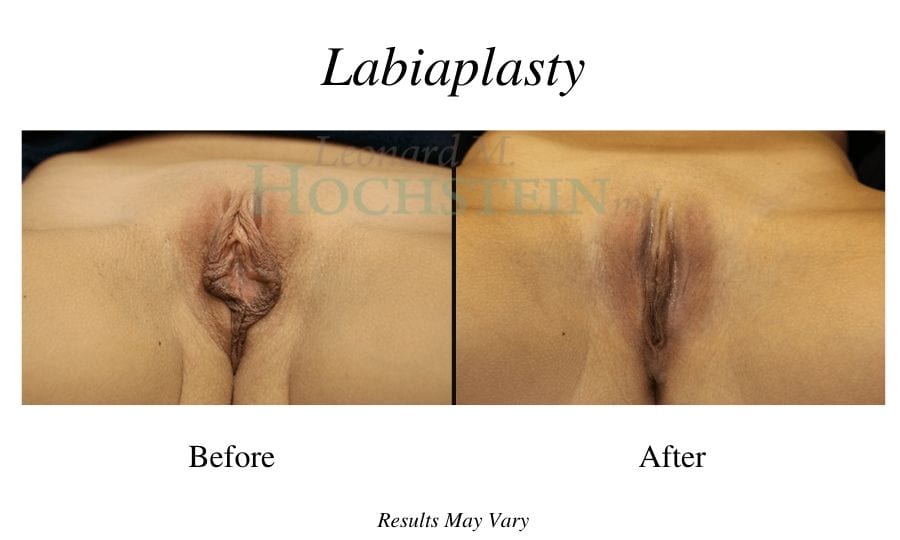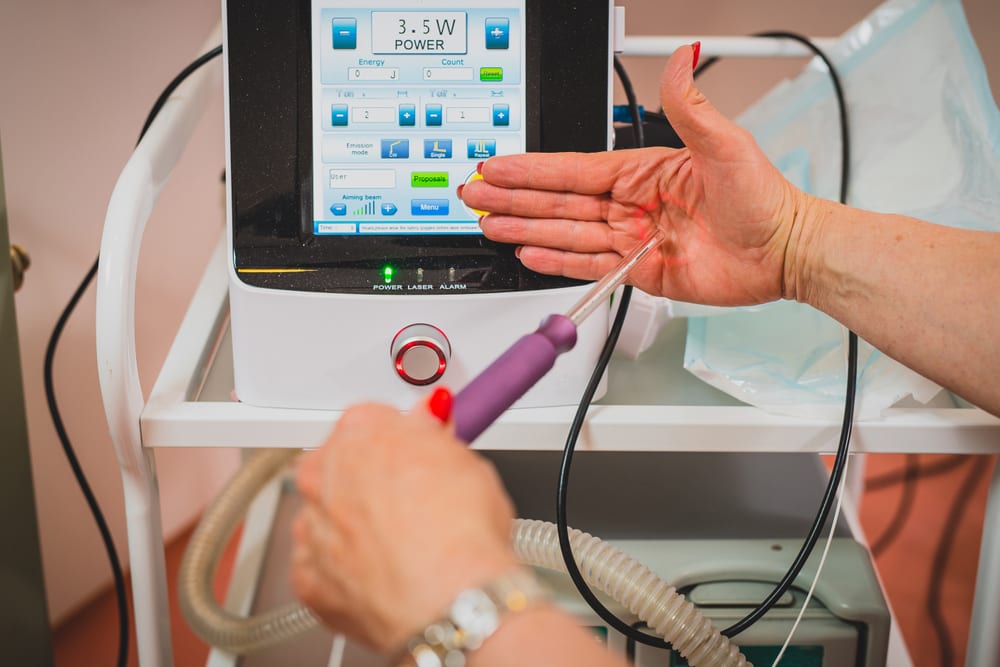6 Minute Read
Table of Contents
How to Completely Rejuvenate Your Vaginal Structure
What Is the Difference Between Labiaplasty and diVa® Laser Vaginal Therapy?
How Does Labiaplasty Work?
How Common Is Labiaplasty?
How Does diVa® Laser Vaginal Therapy Work?
How Common Is Vaginal Lasering?
Cost of Labiaplasty and diVa® Laser Vaginal
What Kind of Recovery Should I Expect From Each Procedure?
How Long After Labiaplasty Can I Have Intercourse?
If you were to ask any woman (especially one who has given birth) what body part of theirs endures the most trauma throughout their entire life, most of them would say their vagina.
It doesn’t take an expert in anatomy to figure out why—childbirth is one of the most painful processes that any person will experience.
No matter how much we can reduce the pain with medications or injections, the trauma caused to the vagina remains the same.
It is normal for the vagina to feel wider, dry, and sore immediately after that trauma.
For the most part, the structure of the vagina will eventually return to its original state shortly after giving birth.[1]
In some cases, however, women find themselves with a permanently wider vaginal wall that can have a negative impact on their sexual experiences.[1]
Even if the inside of a woman’s vagina does go back to its previous form, it is possible for the outer anatomy, notably the labia, to also change in appearance due to childbirth or the natural aging process.
These conditions can do more than just cause problems with self-esteem. They can severely harm a woman’s sexual experience, cause them to be uncomfortable in many types of clothing, and put them in embarrassing social situations.
So, is there anything women can do about it?
How to Completely Rejuvenate Your Vaginal Structure
Many women think they are one of the few who are unhappy with the appearance or function of their vagina.
But a recent survey of 3,670 women by Refinery 29 showed that as much as 48 percent of respondents had concerns about the appearance of their vulva.[3]
Of those women, 64 percent were concerned about their vulva size and 60 percent were concerned about their vulva shape.[3]
Years ago, there might not have been anything that could have been done about these concerns, but today, any woman can make an appointment with a plastic surgeon or physician to correct the size, shape, and structure of their vagina and vulva through two common treatments.
Labiaplasty and diVa® laser therapy can address problems in the inner and outer anatomies of a woman’s genitalia.
But what exactly are these procedures?
What Is the Difference Between Labiaplasty and diVa® Laser Vaginal Therapy?
There are two main differences between these procedures. The first difference is that labiaplasty is a surgical procedure, whereas diVa® laser therapy is non-surgical.
The next big difference is that the labiaplasty corrects only the labia part of the vulva, while diVa® laser therapy focuses on the vaginal walls.
How Does Labiaplasty Work?

The inner labia is the layer of tissue that encloses the vaginal opening.
During a labiaplasty, excess tissue in the inner labia is excised, typically in the shape of a “V.” Then the remaining tissue is pulled together and sutured for a less protruding appearance.
It is not really surprising that so many women are unhappy with the appearance of their vulva since this tissue is prone to enlargement by a variety of different causes, including:
- Hormonal imbalance
- Genetic makeup
- Trauma from childbirth
- Consistent friction
How Common Is Labiaplasty?
As a result of these symptoms, labiaplasty has become a fairly common plastic surgery procedure. In 2018, more than 10,000 of these surgeries were performed by ASPS member surgeons.[4]
That number is even more impressive when you consider that there were zero of these procedures performed less than 20 years ago.[4]
Labiaplasties are only performed on women who are 18 years of age or older since the labia will continue to develop into early adulthood.[5]
How Does diVa® Laser Vaginal Therapy Work?
Unlike a labiaplasty, diVa® laser vaginal therapy is a non-surgical procedure performed in as little as three to five minutes with no anesthesia.
During this time, specialized laser technology is released into the vaginal wall, resulting in a tighter, firmer vaginal structure. For optimal results, three diVa® treatments spaced one month apart are recommended.
One of the most appealing parts of the diVa® laser is that there are only minor side effects like mild swelling, discomfort, and discharge that you need to be concerned about.
How Common Is Vaginal Lasering?
A report from RealSelf called vaginal lasering “one of the hottest emerging treatment categories…”[6]
In the same report, diVa® vaginal therapy was named the number one most “worth it” laser and energy device treatment in 2017.
Vaginal lasering effectiveness also caught the attention of superstars like Khloe Kardashian, who spoke about the treatment on her show “Kocktails With Khloe.”
“My sisters, they’ve had kids, and there’s a vaginal lasering, to tighten … In my household, all they do is talk about this vagina-lasering. It’s like their discussion back and forth.”
It’s been a few years since this comment was made, and the popularity of vaginal lasering has only continued to grow.

Physician holding a laser used for vaginal rejuvenation similar to what patients can expect from the diVa® laser.
Cost of Labiaplasty and diVa® Laser Vaginal Therapy
The average cost of a labiaplasty in 2018, according to the American Society of Plastic Surgeons, was $2,924. But that does not include fees like the operating room cost or the anesthesia.[7]
Typically, diVa® laser therapy costs around $1,000 per treatment, and most patients need two to three treatments.
This means for around $5,000 or $6,000, you can undergo a complete vaginal rejuvenation.
You can continue to combine these treatments with other procedures that are used to restore a mother’s body after birth or to reverse signs of aging.
Procedures that are popular among Mommy Makeover packages are breast lifts, liposuction, and tummy tucks. For a non-surgical alternative, VelaShape® is extremely popular.
What Kind of Recovery Should I Expect From Each Procedure?
As a surgical procedure, labiaplasty will have much more extensive recovery requirements.
Still, many patients are surprised to hear that most of the pain and discomfort typically subsides within one or two weeks. Patients also typically completely heal from a labiaplasty and can return to work after two or three weeks.
How Long After Labiaplasty Can I Have Intercourse?
It is recommended that patients avoid vaginal intercourse for about six weeks following the procedure, but you should ultimately wait until you are cleared by your doctor.
The recovery for the diVa® laser, however, is a total of only 48 hours. After that time, most residual discomfort from the procedure should have resolved and vaginal intercourse can then resume.
More Information About Labiaplasty and diVa® Laser Treatments
If you need more answers about how to undergo a vaginal rejuvenation, give our Miami, Florida, office a call at (305) 931-3338 or visit our online contact page.
[1] https://www.nhs.uk/live-well/sexual-health/vagina-changes-after-childbirth/
[2] https://www.webmd.com/urinary-incontinence-oab/pregnancy#1
[3] https://www.refinery29.com/en-us/2019/03/226659/vagina-attitudes-survey
[4] https://www.plasticsurgery.org/documents/News/Statistics/2018/plastic-surgery-stats-2018
[5] https://www.nhs.uk/conditions/cosmetic-procedures/labiaplasty/
[6] https://insightscenter.realself.com/get-your-free-u-s-laser-energy-report/
[7] https://www.plasticsurgery.org/cosmetic-procedures/vaginal-rejuvenation/labiaplasty